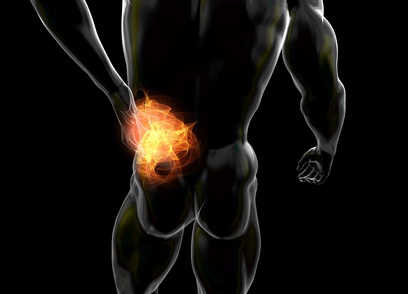
The term sciatica describes symptoms of leg pain, tingling, numbness, pins and needles or weakness. These symptoms generally originate in the lower back and can travel through the buttock and down the back of the leg, sometimes right down to the ankle and foot.
The sciatic nerve is the largest and longest nerve in the body. At each level of the lower back (Lumbar spine) the ‘root’ of a nerve exits through a hole in the vertebrae and joins with other nerves within the buttock to make up the sciatic nerve. The sciatic nerve then runs down the back of each leg. Parts of the sciatic nerve branch out in each leg to supply nerves to the buttock, thigh, calf, toes and foot. These nerves control our muscle strength, coordination, and feeling and when the sciatic nerve is irritated in some way then these functions can be affected.
The term “sciatica” itself is not actually a diagnosis but rather a term to describe irritation of or pressure on the sciatic nerve. Because of this, the symptoms of sciatica may be very different between individuals. The kinds of things someone may experience include full or partial leg and/or foot pain, tingling, numbness and pins and needles throughout the leg and foot or in just one part, and muscle weakness that can be variable in nature. The amount of pain that a person may experience because of sciatica can also vary from a vague nonspecific ache to significant and debilitating pain and it can be anywhere in the leg or foot including the toes!
The causes of sciatica are many and it can occur in the following ways: a slipped/prolapsed lumbar disc (where the jelly-like substance in the disc leaks out and puts pressure on the nerve), degeneration in the lumbar spine (osteo arthritis) with bony spurs putting pressure in the nerve, and slippage of one vertebrae forward on another (known as a spondylotlisthesis). There are other more rare causes of sciatica too.
The natural course of sciatica is for it to improve. This improvement may occur relatively quickly over a few weeks to more slowly over a few months. The majority of sciatic pain will resolve over time and it is only in a few rare cases that spinal surgery is needed to relieve the pressure on the nerve.
As Physiotherapists, sciatic pain is one of the things we deal with the most. We are trained in diagnosing where the sciatica is coming from, and then providing a tailored treatment program to help relieve the pain and get you back to normal function as soon as possible.
The most important things to remember if you are suffering from sciatica is that it will get better and it is important to live life as normally as possible while you have it. Come along to the physio as soon as possible, and let us help you through it.










Mike Martin - 8 years ago
Being the largest nerve, the Sciatica can give the greatest pain. Having endured this particular nerve pain for the past 6 weeks I concur that stretching exercises, walking and plenty of rest are the only way to reduce the constant ache. Anti-inflammatory pain relief helps, and it can take a wee while to subside.